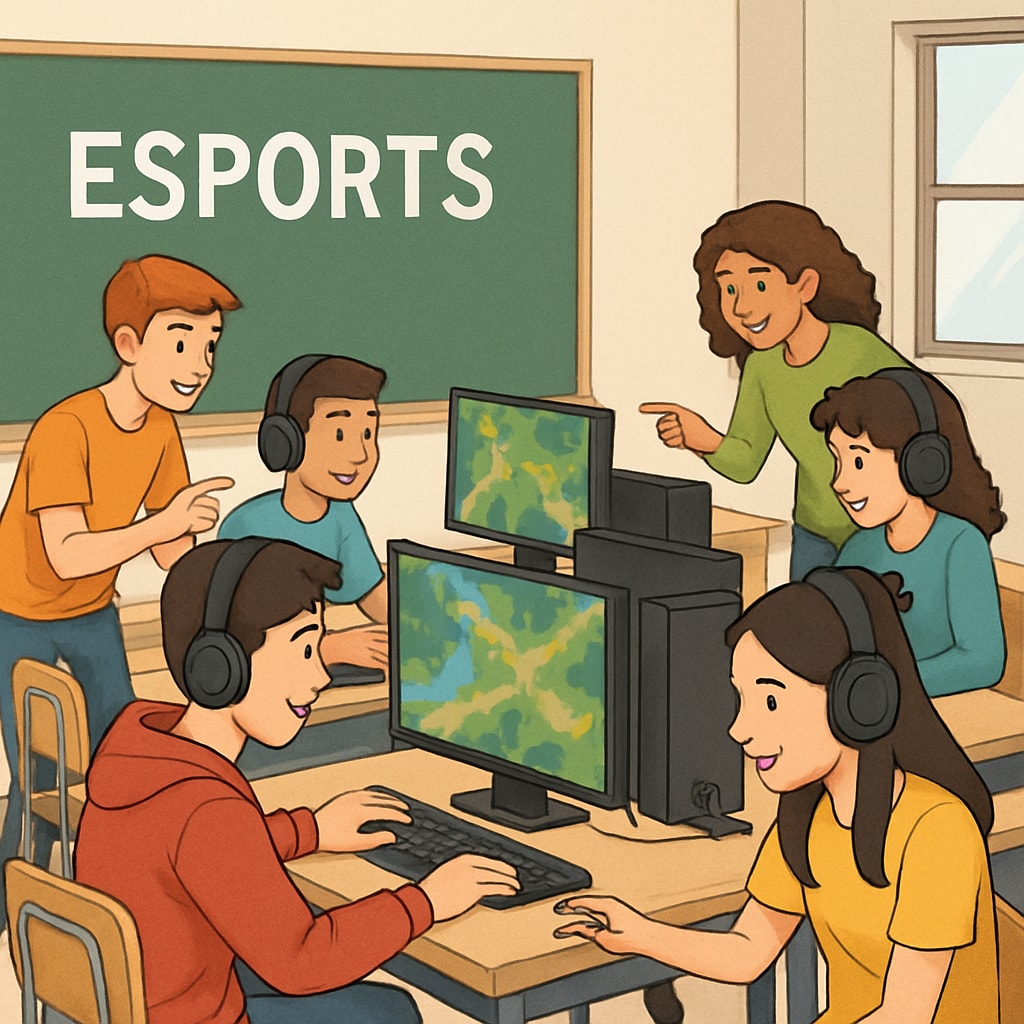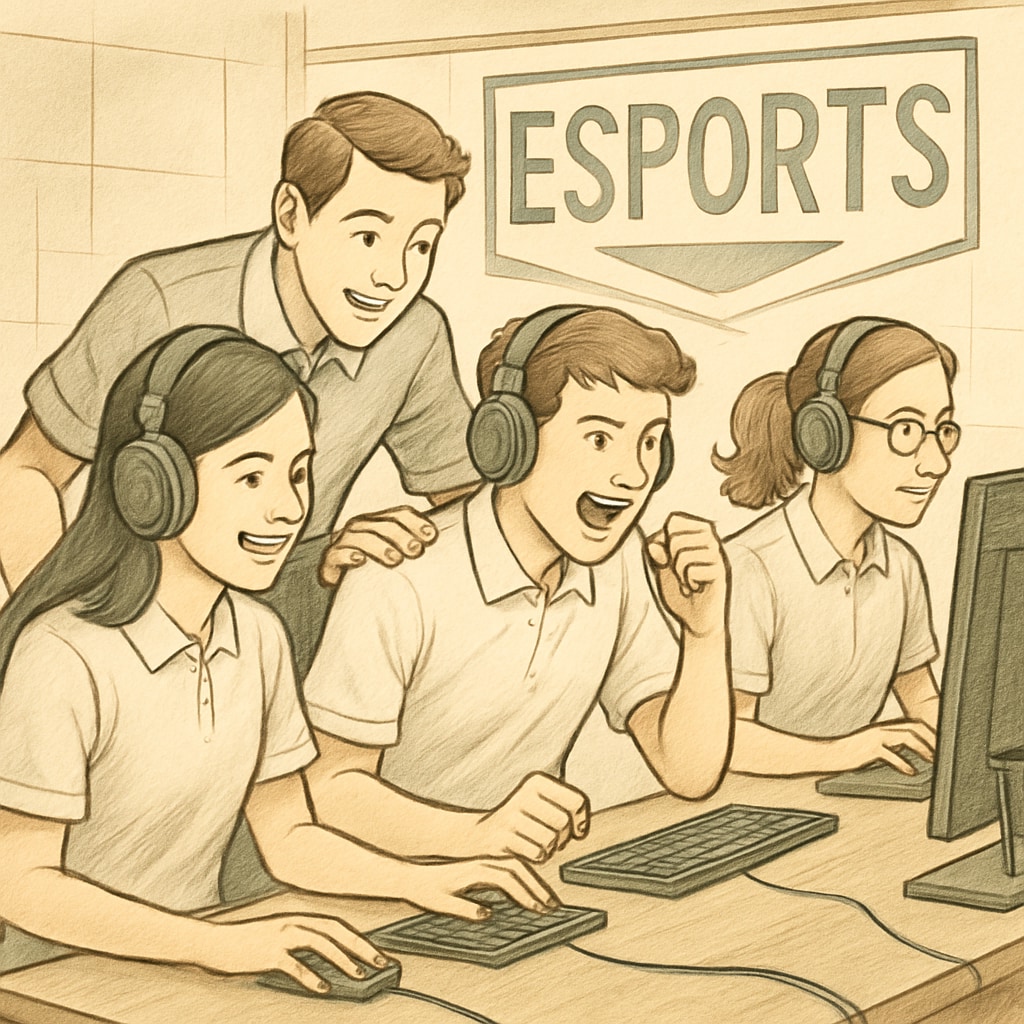Esports, game-based learning, and education are converging in unprecedented ways, thanks to the innovative partnership between GameClass and the North America Scholastic Esports Federation (NASEF). By introducing game-based learning into over 9,000 esports clubs worldwide, this initiative is creating a unique blend of entertainment and education. This revolutionary approach promises to redefine how students engage with learning, making the process both enjoyable and impactful.
How Esports and Education Are Merging
The integration of esports into education is no longer a futuristic concept. By leveraging the popularity of competitive gaming, educators are finding new ways to make learning more interactive and relevant to students. GameClass, a leader in educational technology, and NASEF, a pioneer in scholastic esports, are at the forefront of this transformation.
Through their collaboration, they have introduced a curriculum that combines esports with core academic principles. For example, students involved in esports clubs can now learn critical skills such as teamwork, problem-solving, and time management while improving their understanding of subjects like math, science, and even language arts. This approach turns gaming, an activity many students already enjoy, into a powerful educational tool.

The Benefits of Game-Based Learning in K12 Education
Game-based learning is not a new concept, but its application in K12 education is gaining momentum, especially with the rise of esports. This methodology uses the mechanics of games—such as challenges, rewards, and interactivity—to teach academic and life skills. It transforms the traditional classroom into an environment that fosters engagement and motivation.
Some key benefits of game-based learning include:
- Increased Engagement: Games naturally capture the attention of students, making them more willing to participate in lessons.
- Skill Development: From critical thinking to collaboration, students acquire essential skills while playing games.
- Personalized Learning: Games can adapt to a student’s learning pace, offering a personalized experience.
- Real-World Application: Many games simulate real-world scenarios, helping students understand practical applications of their knowledge.
With esports as a medium, game-based learning becomes even more effective. Students are not only engaged but also motivated by the competitive and social aspects of gaming. This dual-layered approach ensures that learning becomes an enjoyable and rewarding experience.

Transforming K12 Education Through Esports
The GameClass-NASEF partnership is setting a new standard in K12 education. By embedding game-based learning into esports, they are addressing some of the most pressing challenges in modern education, such as lack of student engagement and the need for 21st-century skills.
This initiative also opens up new career pathways for students. The esports industry is booming, with opportunities in fields like game design, event management, and digital marketing. By participating in scholastic esports programs, students gain exposure to these potential careers while developing technical and creative skills.
Furthermore, esports encourages diversity and inclusion. Unlike traditional sports, esports is accessible to a broader range of students, regardless of physical ability or background. This inclusivity ensures that more students can benefit from the educational opportunities esports provides.
The Future of Game-Based Learning and Esports
Looking ahead, the fusion of game-based learning and esports could revolutionize the global education landscape. As more schools adopt this approach, we can expect to see a shift towards more interactive, personalized, and engaging learning environments. The success of the GameClass and NASEF partnership serves as a model for other educational institutions to follow.
In addition, technological advancements such as virtual reality (VR) and artificial intelligence (AI) are likely to further enhance the integration of gaming and education. These tools can create immersive learning experiences that cater to individual student needs, making education more effective and accessible than ever before.
Ultimately, the combination of esports and game-based learning represents a significant step forward in education. By embracing this innovative approach, we can prepare students for a future where adaptability, creativity, and collaboration are key to success.
Readability guidance: The article uses short paragraphs, lists, and a conversational tone to ensure accessibility. Technical terms are explained, and transitions like “however” and “as a result” are used to improve flow. Images are strategically placed to illustrate key points.


